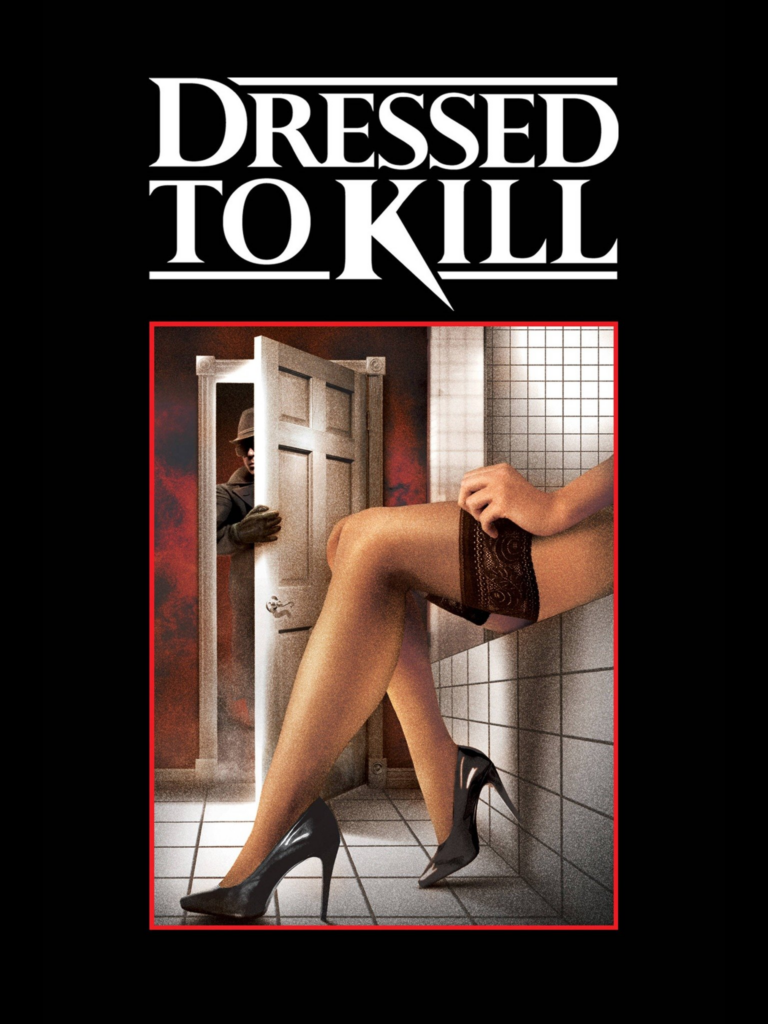
DRESSED TO KILL
(director/writer: Brian De Palma; cinematographer: Ralf Bode; editor: Jerry Greenberg; music: Pino Donaggio; cast: Michael Caine (Doctor Robert Elliott), Angie Dickinson (Kate Miller), Nancy Allen (Liz Blake), Keith Gordon (Peter Miller), Dennis Franz (Detective Marino), David Margulies (Dr. Levy), Ken Baker (Warren Lockman), Susanna Clemm (Undercover Cop Luce); Runtime: 105; MPAA Rating: R; producers: George Litto; Warner Home Video; 1980)
“Never gets past looking dressed up like an expensive hooker.”
Reviewed by Dennis Schwartz
Brian De Palma’s (“Snake Eyes”/”Body Double”) chic thriller rips off Hitchcock’s Psycho but reworks it to even greater effect by featuring shocking slasher shower scenes in the beginning and ending. Its pseudo psychological dramatics never allow it to do more than cruise around as an arty exploitation film filled with sex and gore, but very little heady stuff. It always looks good, as if dressed to kill, and De Palma excels at laying on us lots of nice detailed personal touches (the pickup scene at the art museum, for one) and creating suspense by stringing together a number of eye-popping thrill moments that are handsomely lurid (but sadly equating a grizzly murder to casual sex). Dressed To Kill never gets past looking dressed up like an expensive hooker, and always leads us down a dead end street. Ultimately it can only titillate us sensually by attacking our jugulars, and even though sometimes brilliant it degenerates into a nasty take on a sadistic psychopath who outside of being a plot device is never developed as a real character.
Frustrated housewife Kate Miller (Angie Dickinson) is in a loveless marriage and can’t get it on sexually with her cold hubby, so she sees New York psychiatrist Dr. Elliott (Michael Caine) for help. Turned down by him after making a pass, the horny woman who is still haunted by a rape some years ago, hangs around the Museum of Modern Art. There she’s picked up by a mysterious stranger, Warren Lockman (Ken Baker), who without introducing himself takes her in the cab and gives her head and then screws her all afternoon in his apartment, much to her satisfaction. Before she leaves, she discovers he has a venereal disease. But that turns out to be the least of the hard-luck Kate’s problems. While leaving Warren’s apartment she’s savagely attacked and cut to pieces in the elevator by a masculine looking woman in a blonde wig, trenchcoat and wearing dark sunglasses, who is wielding a barber’s razor (it’s not hard to guess who, but the film shies away from mystery and intends only to build its story on a series of shocking scenes). This brutality is witnessed by a prostitute Liz (Nancy Allen), who got a look at the murderer before he fled. Under the insensitive questioning of crude homicide detective Marino (Dennis Franz), Liz’s story is ridiculed and she’s labeled as a suspect. When she later tells Marino the killer was following her and she was almost attacked by four black thugs on the subway as she tried to avoid the killer, Marino holds out the possibility that it could be one of Elliott’s patients and goads her into breaking into the shrink’s office to get a list of his patients. Marino says he’s waiting for a judge to give him a search warrant and though he’s not telling her to do it, she could get the list faster than he can and thereby clear her name. The only overt help Liz gets is from Kate’s Mr. Wizard teenage son Peter (Keith Gordon), who loved his mom and wants to catch the killer. The hooker and the nerdy tech kid team up to catch the killer, with some help from a woman undercover cop who was tailing Liz.
The film deals with a messy subject matter: a transsexual as the slasher murderer, whom we learn kills when aroused because he was denied a sex change operation. The graphically violent scenes made the film controversial. But De Palma only seems to be toying with the same reactionary attitudes that most Hollywood horror films have toward sex, that having pleasure outside of marriage is tabu and such sexual liberation acts whether fantasized or carried out for real signal trouble ahead because it stirs up evil forces. No wonder feminists reacted strongly against it, though in De Palma’s defense he was more or less aiming to make this a humorous sex gore film–though it was hard to get laughs when viewing all the blood flowing.
REVIEWED ON 8/31/2005 GRADE: B
© ALL RIGHTS RESERVED DENNIS SCHWARTZ